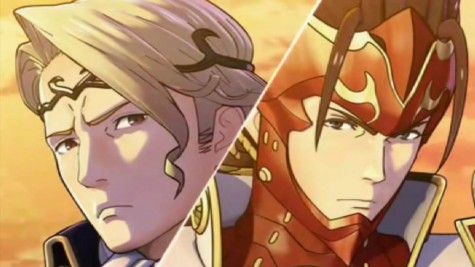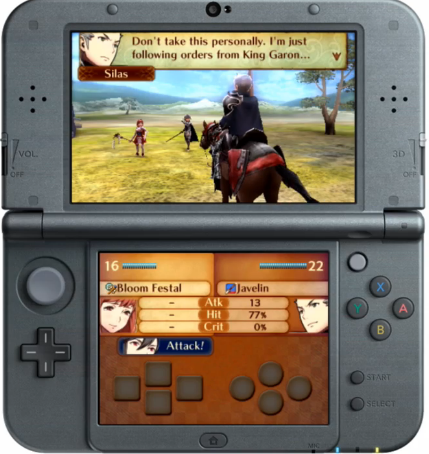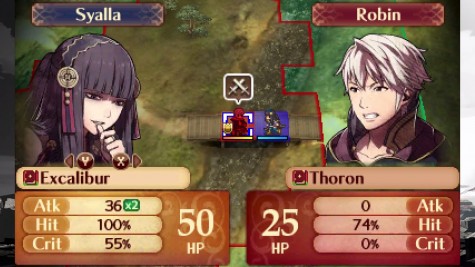Opinion: “Fire Emblem Fates” is a must-have 3DS game
March 4, 2016
When you think of Nintendo, the franchises that usually come to mind are “Mario”, “The Legend of Zelda” and “Pokémon”. However, one of their best franchises is sadly overlooked by many. This series is none other than “Fire Emblem”. If you haven’t played a “Fire Emblem” game, you are seriously missing out.
For those that don’t know, “Fire Emblem” is a tactical role-playing video game (you and your enemy fight by taking turns moving your units strategically around the battlefield). It has been around since the 90’s, but its popularity decreased as time went on. In 2010, Nintendo warned the development team that unless the next game sold at least 250,000 units, it would pull the plug on the series forever. As such, the team went all out as if it were the last game, creating new features and innovating their established formula. In 2012, they released “Fire Emblem Awakening” in Japan for the Nintendo 3DS, selling 242,000 units in their opening week alone. As of December 2014, the game has sold over 1.9 million units worldwide. Needless to say, it completely blew expectations.
When time came to develop a new game in the series, the creators realized they had a lot of work to do if they wanted to surpass “Awakening”. Giving themselves three years of development time, “Fire Emblem Fates” (known as “Fire Emblem If” in Japan) finally launched on June 25, 2015 in Japan and February 19, 2016 in North America. The reception has been as great as, if not greater than, “Awakening”, and understandably so. “Fates” has improved on nearly every aspect of “Awakening”.
The story in “Fates” is much larger than any other game in the series. You play as a created avatar (with the default name of Corrin, but that’s changeable) who is caught in the center of a war between two neighboring kingdoms, the war-hungry Nohr and the peaceful Hoshido. You see, Corrin was born to Hoshido royalty, but was kidnapped by Nohr royalty as a baby. Both sides value Corrin tremendously and want Corrin on their side. Now it’s up to the player to make a decision: side with the family that raised you or with the family you were born into. The decision you make completely changes the game, not just in story, but in gameplay. Siding with Hoshido features traditional “Fire Emblem” mechanics, but the Nohr side does away with some of that for unique battle objectives and challenging experiences. So for once, a story decision doesn’t just affect the characters, it also affects you, the player, and the way you interact with the game’s world.
Speaking of the characters, “Fire Emblem” is known for its wonderful cast of characters. Each unit isn’t just a disposable soldier; they are people with distinct personalities and backstories. As your units fight alongside each other, they have special conversations that are different per pair. Through these conversations and their personal dialogue, you come to genuinely care about these characters. You watch as they build unbreakable bonds with their allies, let go of their tragic pasts, cope with the horror of bloodshed, learn powerful life lessons and even fall in love with other characters. There are literally hundreds of different possible conversations that cannot all be achieved on a single run of the game. I cannot think of any game series that makes players deeply care about its cast as much as “Fire Emblem”.
This is further backed up by the series’ infamous game mechanic, permadeath (permanent death). In this series, if a unit dies in battle, they are dead forever. The end. Done. Never to return again. If units were simple, bland soldiers indistinguishable from each other, it wouldn’t really matter emotionally to the player. They could easily be replaced. Not in this game, however. As mentioned before, every character in this game is unique and feels alive. It truly hurts when they face death, especially after you get to know them well, because you know that you’ll never see them again. Many of them will die with regrets and leave behind a spouse with kids. This permadeath system along with the bonding of characters is absolutely genius. It gives players real incentive to perform well. You don’t want to lose a character, so you’ll do everything you can to strategize your tactics as best as possible. It’s not an understatement to say that every decision counts. One wrong misstep or calculation, and it could be game over.
While the combat experience is well refined and a total joy to play, outside of the missions is where “Fates” lacks in content. Before and after battles, you can customize your own personal castle where you stock up on gear, personalize units and build defensive weapons to protect your castle. It sounds good on paper, and it isn’t bad per se, but it’s severely lacking in options. No matter what you do to make your castle look unique, it’ll still look very similar to everyone else’s. Plus, attacks on a castles are optional missions, so there’s no incentive to build defensive weapons. Multiplayer also exists in “Fates”, but like the castle creator, it’s very weak. You can do one of two things: visit other players’ castles or pit your units against theirs. When visiting their castles, interaction with their creations is very limited and pretty much a waste of time. Fighting against others is definitely the better option, but you can only bring a whopping five units, which leads to very short battles with a lack of strategy (made even worse if one of the player’s units are overpowered).
These flaws, however, do not take away from the amazing tactical, single player experience. Every battle will leave you wanting more, rewarding your skill and intelligence. With the different difficulty modes, gameplay styles, character interactions and plot lines, replay value is high in this title. If you own a 3DS, “Fire Emblem Fates” is a must-have in your game library.




















